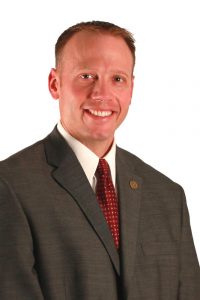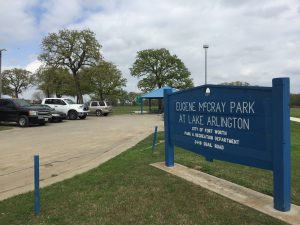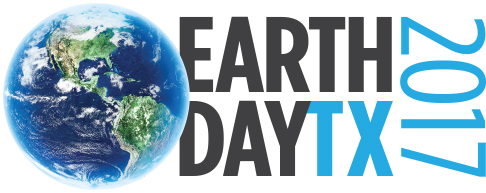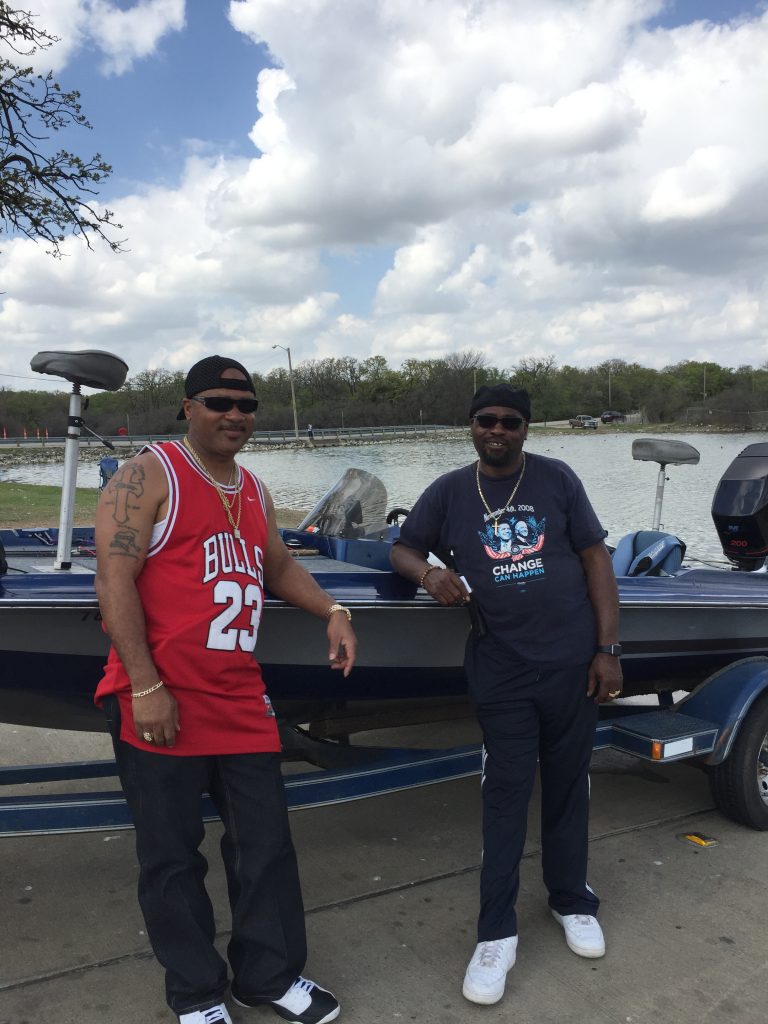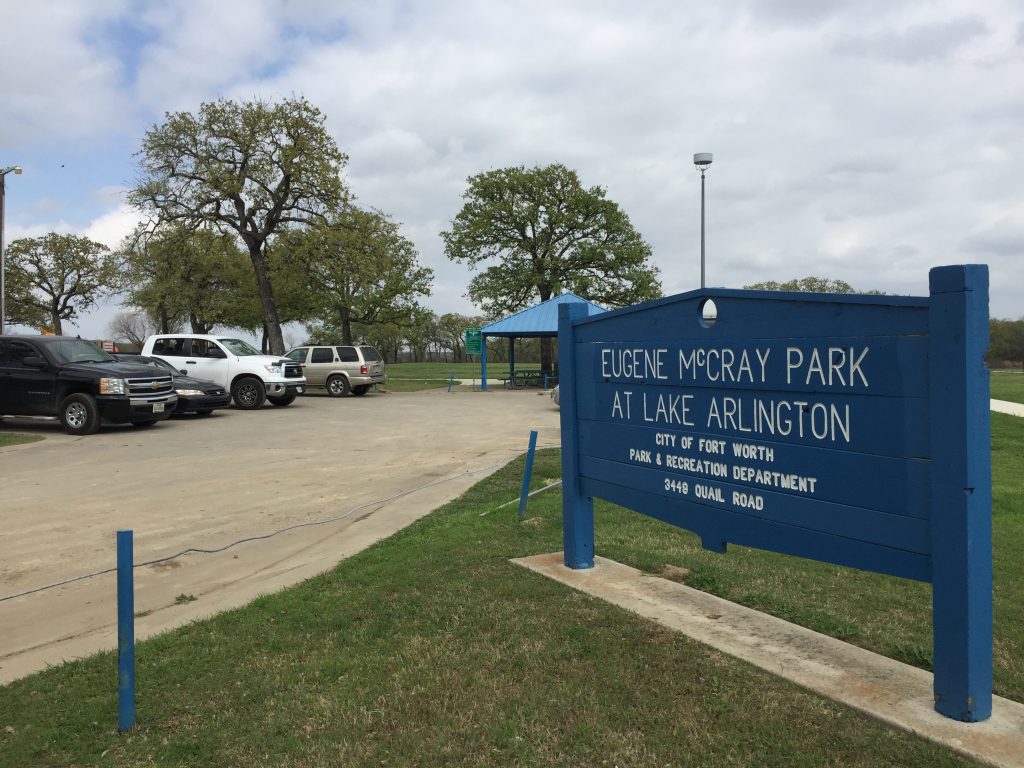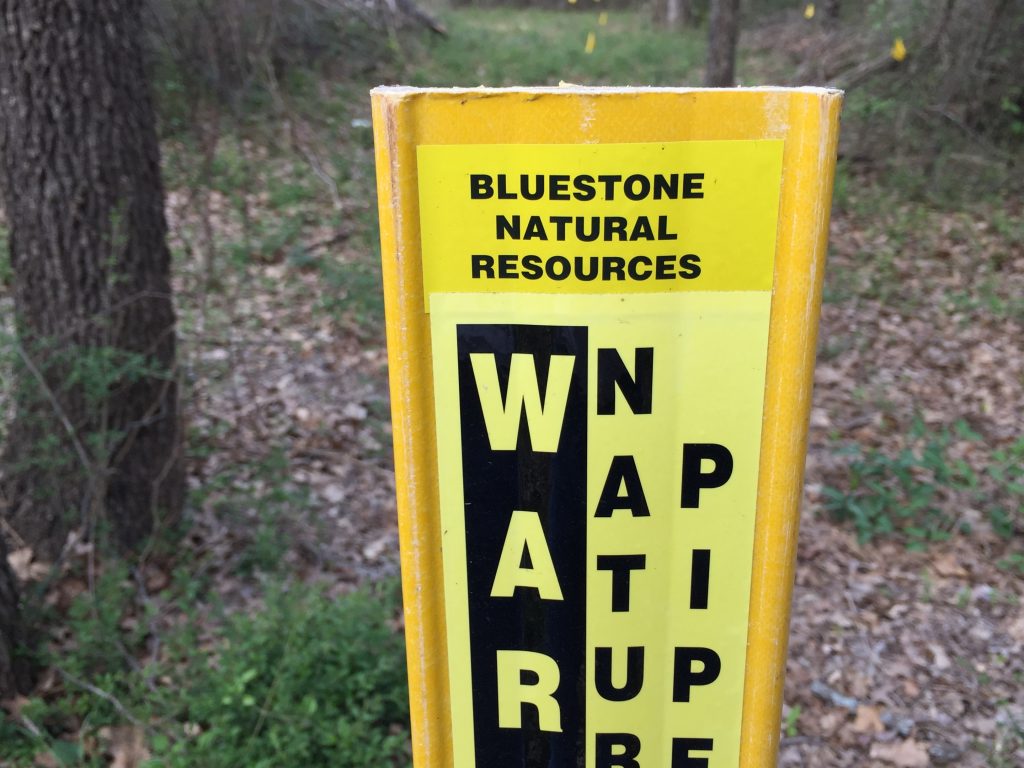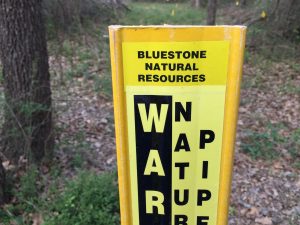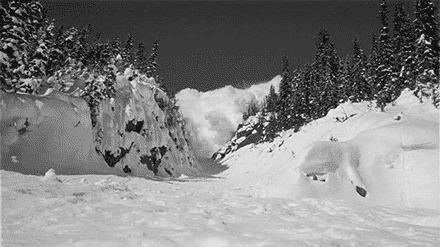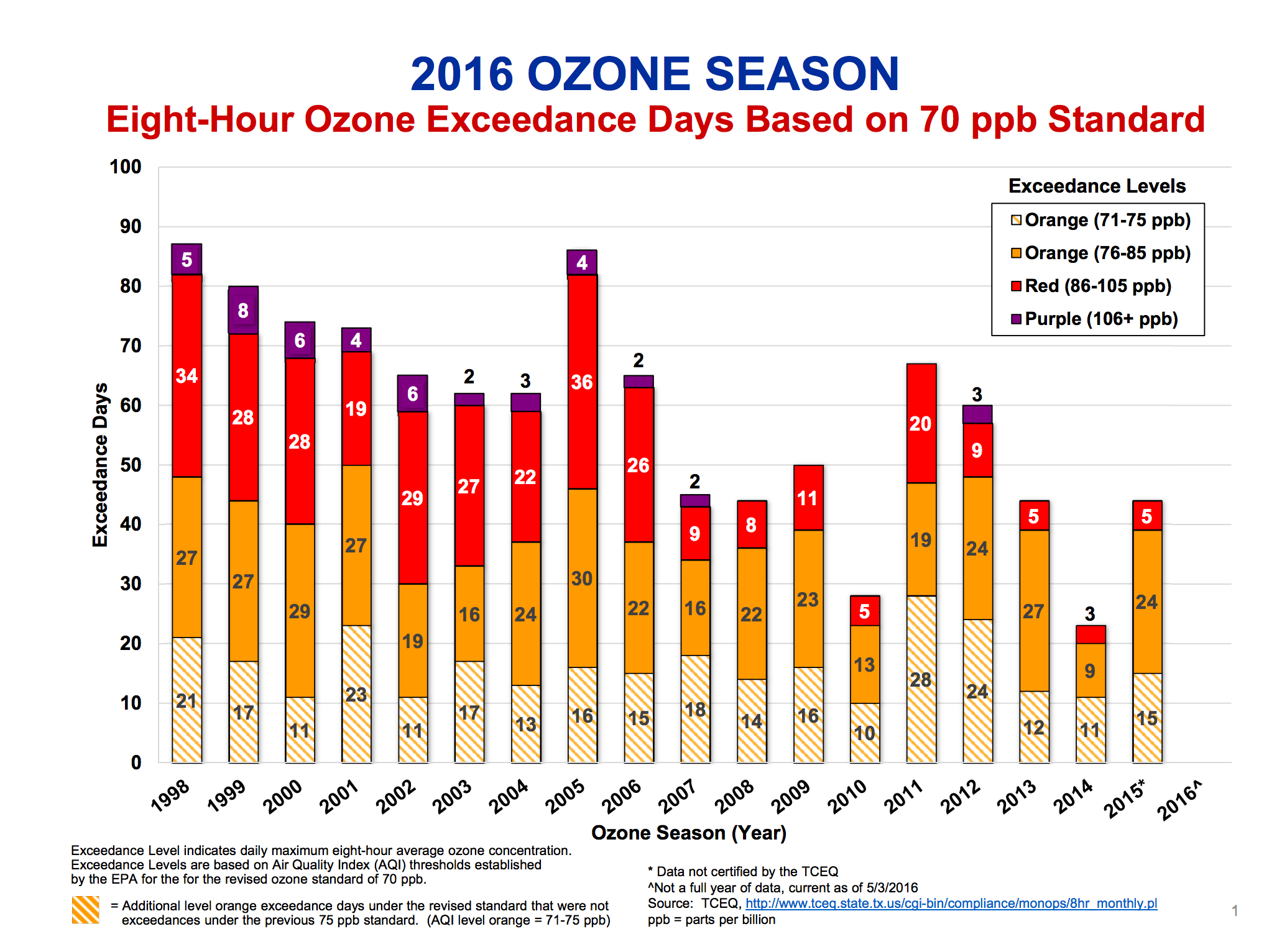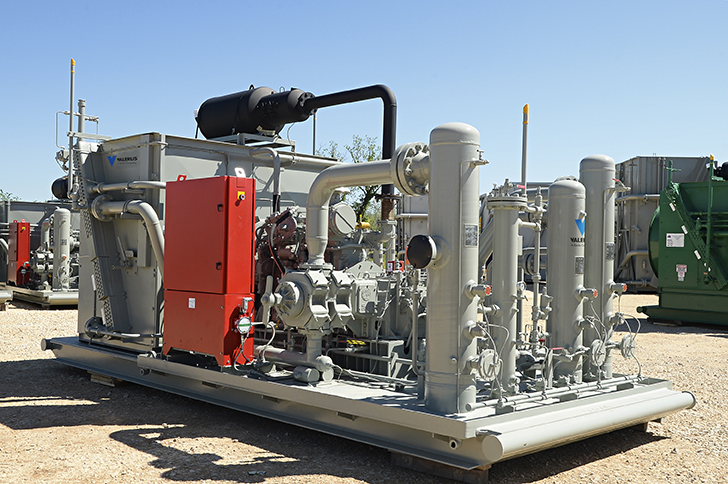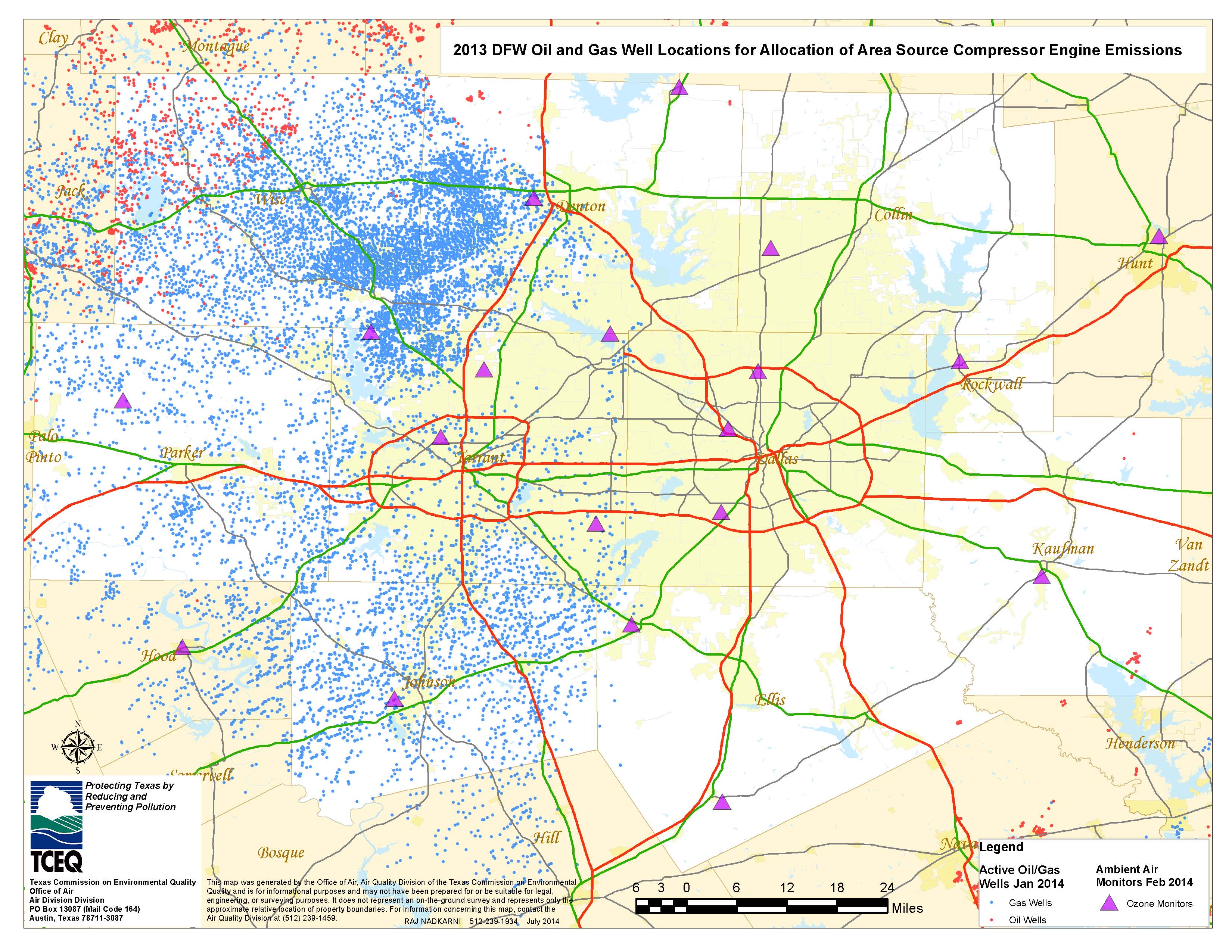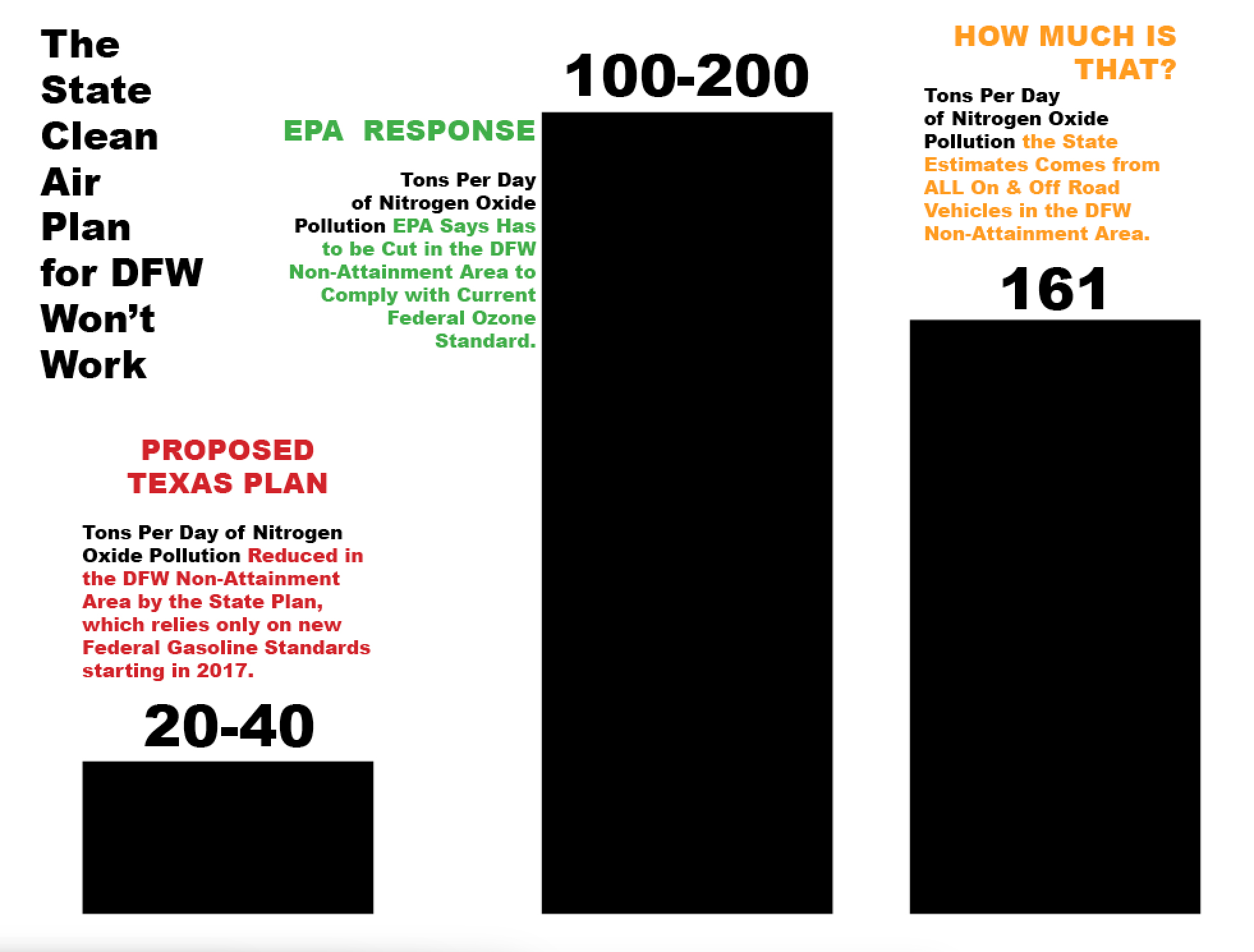Fracking
The Only Public Hearing in the Nation on the Trump EPA Rollback of Methane Emission Rules for Oil and Gas is in Dallas: 8am to 6pm Thursday October 17th
 October 17th is also the date of the only public hearing being offered on one of the most far-reaching rule-rollbacks of the Trump administration – allowing more methane to be released from the nation’s oil and gas wells. And it’s right here in Dallas.
October 17th is also the date of the only public hearing being offered on one of the most far-reaching rule-rollbacks of the Trump administration – allowing more methane to be released from the nation’s oil and gas wells. And it’s right here in Dallas.
In August, the Trump EPA officially proposed its rollback of the methane emissions regulation put in place by the Obama administration. This one-day hearing in Dallas is the single chance for citizens to speak-up and be heard in person. You can bet industry will be out in force to support it.
As many of you already know, Methane pollution is less plentiful than CO2 but is approximately 85 times more potent as a climate destroyer. This is part of what makes it so important to decrease emissions.
But Methane is also a surrogate pollutant for a host of chemicals called VOCs – Volatile Organic Compounds – like the carcinogen Benzene. When you decrease methane emissions from an oil or gas well, you’re also decreasing VOC emissions across the board.
Many VOCs are dangerous toxins and as a class of chemicals contribute to smog. Downwinders at Risk landmark 2015 study of smog sources in DFW identified 50 tons a day of VOCs from regional gas wells and production facilities that contributed up to almost 4 parts per billion of smog.
 Rolling back the Obama Administration rule to limit methane emissions means more toxic exposures to thousands of residents in DFW living within hundreds of feet of wells and facilities. it also means our chronic, three-decade old smog problem, which got worse this summer for the first time in five years, will keep going further south.
Rolling back the Obama Administration rule to limit methane emissions means more toxic exposures to thousands of residents in DFW living within hundreds of feet of wells and facilities. it also means our chronic, three-decade old smog problem, which got worse this summer for the first time in five years, will keep going further south. It’s no coincidence that these hearings take place during working hours when professional lobbyists can attend but working people can’t. Nevertheless DFW residents must step up and represent all those folks from around the US who are not being given a chance to speak.
The public hearing will be held at the Earle Cabell Federal Courthouse, 1100 Commerce Street, in Dallas, in the Red River and Live Oak conference rooms on the 7th floor. According to the official notice, “Because this hearing is being held at a U.S. government facility, individuals planning to attend the hearing should be prepared to show valid picture identification to the security staff to gain access to the meeting room.”
To register to speak, you have to use the online registration form available at https://www.epa.gov/controlling-air-pollution-oil-and-natural-gas-industry/proposed-policy-amendments-2012-and-2016-new or contact Virginia Hunt at (919) 541-0832 to register to speak. The last day to pre-register to speak at the hearing will be October 14, 2019.
Testify downtown and then come and hear Dr. Bullard testify at Paul Quinn.
Citizens Just Won a Fight Over Local Control….Now What?
 In case you missed it, last Thursday the Bluestone company pulled its permit request for a new fracking waste Injection well that was going to be sited on the western shores of Lake Arlington.
In case you missed it, last Thursday the Bluestone company pulled its permit request for a new fracking waste Injection well that was going to be sited on the western shores of Lake Arlington.
Congratulations to Liveable Arlington and everyone else who contributed to this victory. It’s always great when you can stop a bad idea in its tracks, but to stop this one, with the current Powers-That-Be, is quite remarkable.
Bluestone’s application had united a broad spectrum of allies for a Barnett Shale fight – residents, local fractivists, municipalities, and water quality groups. Fort Worth had banned such wells years prior to the passage of notorious HB40, but Bluestone acted like that ban didn’t matter. Arlington objected over its drinking water source being imperiled by the well. Bluestone shrugged its shoulders.
Here was the first challenge to the uneasy truce that settled over the state between home rule cities and Austin after HB40 took effect. And it came not from an aspiring Denton trying to protect its citizens, but from industry. And it wasn’t targeting an upstart city, but the town that industry hailed as a model of gas regulation only two years ago when HB40 passed.
Thousands of letters opposing the permit were sent in to the Railroad Commission. An army of lawyers had been hired by Forth Worth and Arlington. It became a point of contention when RRC Commissioner Ryan Sitton visited from Austin in April to attend a Stop Six community meeting and Earth Day Texas. Momentum was with the opposition as it headed into a September hearing, already postponed twice. Bluestone was, seemingly, one injection well too far: the poster boy for overreach by an industry swelled with avarice.
Which makes its sudden absence a jolt to the system. On the one hand it’s good to know that in the current political climate there’s SOMETHING industry does that goes too far, even for the Texas “bidness-friendly” regulatory establishment.
On the other, it takes the air out of the largest wave of opposition to a gas patch permit in a very long time and brings us back to the truce frozen in place in when HB40 passed. Everyone is settling back into the stifled status quo, where technology, problems, and profits can advance with time, but local regulations are forever stuck in 2015.
All that energy into opposing Bluestone, only to arrive back where we started.
Which is why now, when citizens just won a major victory, is not the time to take our foot off the gas. It’s actually the time to set the stage for a fight in Austin in 2019.
Bluestone’s permit application proves cities must have more protection than HB40 provides. It’s still a poster boy for overreach. But so are other fights. On the same day the news was announced about Bluestone’s withdrawal, the owners of a proposed concrete crushing plant that Fort Worth Eastsiders fought off last year turned back up and filed for another try. Even though city zoning prohibits the facility from the location it wants near city parks and a school.
 Statewide, there’s a growing backlash to Austin’s attempt to take away any and all vestiges of traditional Texas home rule local control. What started with protecting the gas industry has now swept up everything from trees to immigration and many Texas citizens, even conservative ones, are aghast at the result.
Statewide, there’s a growing backlash to Austin’s attempt to take away any and all vestiges of traditional Texas home rule local control. What started with protecting the gas industry has now swept up everything from trees to immigration and many Texas citizens, even conservative ones, are aghast at the result.
Environmentalists and fracktivists need to take advantage of this shift in the swing of the pendulum. In 2017 all of our efforts to clean-up the gas industry begin and end at the local level, where office holders must live with the results of their decisions side-by-side with their constituents. And yet HB40 makes any local advancement impossible. To get anywhere, to move off dead center, that law must be amended, or rescinded.
That is a multi-year, statewide effort that has to begin now if it’s to arrive in Austin in January 2019 with any impact.
To pull that off the movement will have to get over its aversion to coordinating regionally across city limits and be more proactive. So far, the fights in the Barnett have been city-by city, with no overarching alliances. Less coordination has meant less power. All one has to do is look at the anemic responses to HB40 in this year’s legislature to see how weak this strategy has made the movement.
But some hope could arrive in Austin in January 2019 in the form of an organized coalition of the self-interested promoting good-old fashioned local control, working with the victors of what could be a November 2018 mid-term “wave” election that might even reshape the Texas Legislature.
Who will be the architects of that strategy? Certainly not any of the larger national environmental groups, who’ve written Texas off and only want to collet money here, not spend it. It will probably have to be home grown with the assist of new groups like the Campaign to Defend Local Solutions that are linking-up threats to local control across the country.
It feels good for citizens to win one. And it would be nice if we could rest a while now and enjoy the victory, because they are so few and far between.
But sinking back into inaction only guarantees that another Bluestone will be showing up. If not in your backyard, then someone else’s. Now that we’ve established where the line in the sand is, it’s time to move the line forward.
Next Week Gives You Two Chances to Press RRC Commissioner on Lake Arlington Injection Well
Texas Railroad Commissioner Ryan Sitton in DFW Next Week
Thursday Night, April 20, 2017 6:00 PM – 8:00 PM
Community Forum about: Injection Disposal Wells
Handley Meadowbrook Community Center
6201 Beaty St, Fort Worth, TX 76112
Sponsored by St. Rep Nicole Collier
Friday Morning, April 21st, 10:50 – 11:40 am
Responsible Shale Extraction Roundtable Discussion
Automotive Building, Earth Day Texas at Fair Park
Open, public, and free appearances in DFW by Texas Railroad Commissioners these days are about as rare as actual trains at the RRC. But this next week offers two chances for local residents to see, hear, and talk to a real Commissioner without having to donate money to his campaign.
Irving’s own Ryan Sitton, RRC Commissioner since 2014, will be in town for two free public forums on consecutive days on either side of the Metromess: Thursday night at a community meeting in Southeast Fort Worth and Friday morning at an Earth Day Texas appearance at Fair Park.
That’s important because Sitton is one of only three RRC votes that could decide to take the unprecedented action of permitting a huge fracking waste injection well on the shores of Lake Arlington, source of drinking water to hundreds of thousands, and just a short distance from Eugene McCray Park, one of the most popular recreational spots for Fort Worth’s black community.
On Thursday from 6 to 8 pm, at the Handley Meadowbrook Community Center, Sitton will be the featured guest of a forum on the injection well sponsored by State Representative Nicole Collier, who represents Stop Six.
On Friday morning, from 10:50 to 11:40 am Sitton will be one of four participants in a Earth Day Texas roundtable discussion at Fair Park on “Responsible Shale Extraction” as part of UTA’s C.L.E.A.R. ambitious two-day symposium on the oil and gas industry within the weekend extravaganza. Also on the Earth Day panel are UTA’s Dr. Kevin Shugg, Director of CLEAR, Laura Buchanan, who’s the Director of the Texas Land and Mineral Rights Association, and Downwinders’ own Jim Schermbeck.
Sitton spent his early career working for the oil and gas industry, including ALCOA, Oxy, Marathon, and Berwanger Engineering and Consulting. In 2006, he and his wife founded PinnacleART, an engineering consulting company. Like all of his peers, his 2014 campaign was primarily financed by individuals and corporations he’s now in charge of regulating.
The threat to Lake Arlington has brought opposition from a host of cities who get some or most of their drinking water from the reservoir, including the City of Arlington and Grapevine, while earning Fort Worth’s outrage by challenging a pre-HB40 ban on such wells in the city limits. Back in 2015, Cowtown’s oil and gas drilling-friendly ordinance was touted by the industry as a model. It only took two years for the industry to decide it wanted an even more lenient code of conduct – one that would allow over a million gallons of fracking waste to be injected daily at high pressure into fissures directly under Lake Arlington.
Bluestone’s blatant provocation has produced an alliance between fractivists, environmentalists, Stop Six residents, and municipalities like Fort Worth that was unthinkable in 2015.
These two appearances by Sitton are likely one of the only opportunities most DFW residents will get to voice their opposition to the injection well to a RRC Commissioner in person before the May hearing September hearing on the permit.
The two-day hearing before the entire RRC will take place in Austin, not Arlington or Ft. Worth, and after that, no matter the ruling, the feeling is that all of this is going to be in court for a while. So please spread the word and use Thursday and Friday to make sure Commissioner Sitton knows exactly how local residents feel about the Bluestone permit.
You can also still use our Featured Citizen Action link send an email to the RRC protesting the injection well.
Make no mistake about it, the decision the RRC makes about this in-your-face industry confrontation with Fort Worth – whether even a “model” ordinance can withstand the rapacious regulatory rollback currently underway within federal and state government, is going to be a landmark one affecting every city in Texas. Don’t sit it out.
Downwinders Participates in First Earth Day Texas Oil and Gas Symposium
Downwinders at Risk is proud to be taking part in the first annual Responsible Shale Energy Extraction (RSEE) Symposium & Exposition, happening over two days at this year’s at Fair Park in Dallas, Friday April 21st and Saturday, April 22nd.
Climate Change superstar Dr. Katherine Hayhoe, Fracking health-effects lecturer (and Downwinder friend) Dr. Anne Epstein, and the Texas Railroad Commission’s own Ryan Sitton will also be participating, along with lots of others.
UTA’s Collaborative Laboratories for Environmental Analysis and Remediation, or (CLEAR) is the event’s primary sponsor and organizer, with an assist from the Cynthia and George Mitchell Foundation in Houston. Some of you may know the late George Mitchell as the inventor of fracking, but even he had serious second thoughts about the way the technology was being used.
The Symposium is an attempt to round-up scientists, industry advocates, environmental groups, and technology developers to talk both about fracking’s very real problems, and possible solutions, in an open forum.
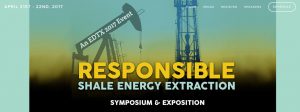 Since 2012 CLEAR has been out and about collecting samples throughout the Barnett Shale and other plays, identifying surface water and groundwater contamination issues that may or may not be directly linked to fracking itself. This is the first time in its history the group has taken on the task of sponsoring a two-day conference. Almost every aspect of unconventional shale mining, or hydraulic fracturing, will try to be addressed.
Since 2012 CLEAR has been out and about collecting samples throughout the Barnett Shale and other plays, identifying surface water and groundwater contamination issues that may or may not be directly linked to fracking itself. This is the first time in its history the group has taken on the task of sponsoring a two-day conference. Almost every aspect of unconventional shale mining, or hydraulic fracturing, will try to be addressed.
Everything is being run out of “The Westminster Abby of Texas,” Fair Park’s own Hall of State. A complete schedule is available here.
Downwinders’ Director Jim Schermbeck appears as part of a roundtable discussion on fracking in general, comparing the perspectives of landowners, gas operators, public health and environmental advocates and scientists. It includes water entrepreneurRichard Seline (AccelerateH20), TRRC Commissioner Ryan Sitton,Laura Buchanan, Executive Director of the Texas Land & Mineral Owners Association , and UTA’s own Kevin Schug.
Maybe you’ll want to come by The Hall of State Friday and mention to Commissioner Sitton how much you dislike the fact that BlueStone wants to put a new injection well on the shores of Lake Arlington. Or show-up on Saturday to see Dr. Hayhoe wow ’em again. But anytime you decide to visit Earth Day Texas, please make sure you come by and say hello to us at the Downwinders table over in the Centennial Building.
“This is the Black Side of Lake Arlington.” Why the BlueStone fracking waste injection well fight is also an Environmental Justice fight
By now you might have heard about the new fracking waste injection well being sought by BlueStone Corporation on the shores of Lake Arlington, the source of drinking water to hundreds of thousands of Arlington residents as well as the cities of Bedford, Colleyville, Euless, Grapevine, and North Richland Hills.
You may know it’s being proposed with a straight face near the Lake Arlington dam, and presents a direct challenge to the municipal bans on such wells that both Fort Worth and Arlington have passed.
But did you know there’s a lakeside public park that’s a longtime social and recreational hot spot for Fort Worth’s Black community just hundreds of feet away? Did you know there are Stop Six residents living adjacent to the proposed well site?
You’d never guess it from the view most of us get out of our cars buzzing by the East Berry exit on Loop 820. Nor can you find it on any of your Internet navigation maps. That’s right, it’s a park and neighborhood so unknown, even Google can’t find it.
But drop by Eugene McCray Park any given weekend and you’ll see a large slice of older Fort Worth black culture, with lots of fishing rods, lawn chairs, and baking brisket. “This is the Black Side of Lake Arlington” says an older gentleman sitting on his tailgate, and a panoramic look around confirms his judgement.
Smaller children energetically utilize the top-o-the-hill playground, older kids and their parents fish from the shoreline, others out in all varieties of boats come and go from the park’s ramp, birthday and anniversary parties roar with laughter from the covered pavilions, customized grills and recipes are carefully tended, dominos are slapped down hard on the cement tables, all surrounded by fresh spring greenery and the lapping waters of the lake. You can watch a heron swallowing a snack, or florescent-necked ducks swimming the small bay that shoulders the park. It’s one giant African-American Norman Rockwall painting. On this March spring day, it’s as though Stop Six has its own miniature all-black Eden in the middle of DFW that no white person can even guess is here.
 But less than a quarter-mile mile south along this idyllic lake shore is where the BlueStone corporation wants to start disposing of a million and a half gallons of fracking waste a day – in direct violation of a Fort Worth ordinance that says you can’t do that. It’s also the first real challenge to the stalemate frozen in place by 2015’s state law HB40, reining-in the power of cities to regulate oil and gas facilities within their own city limits.
But less than a quarter-mile mile south along this idyllic lake shore is where the BlueStone corporation wants to start disposing of a million and a half gallons of fracking waste a day – in direct violation of a Fort Worth ordinance that says you can’t do that. It’s also the first real challenge to the stalemate frozen in place by 2015’s state law HB40, reining-in the power of cities to regulate oil and gas facilities within their own city limits.
On either side of the well site, neighborhoods are squeezed between 820 and the lake with a mix of low and middle-income renters and homeowners, small lots with gardens, and older ranchettes with horse stalls and chicken coops. McCray Park is their backyard.
Last year BlueStone inherited thousands of local gas wells from belly-up Quicksilver Energy. Right now, the wastes from those wells goes outside the city limits to injection waste wells in other parts of North Texas – places that have had their own problems with their continued operation (like earthquakes, which makes putting a new one by a large dam seem like a bad idea, but we digress….)
But if it had to have a new well – and there’s no proof it did – BlueStone had the pick of any area in Tarrant County or Fort Worth to site this new facility. Nothing in the quotes from the company so far indicate this Stop Six site is an especially strategic or convenient location to ship the wastes from those Quicksilver wells.
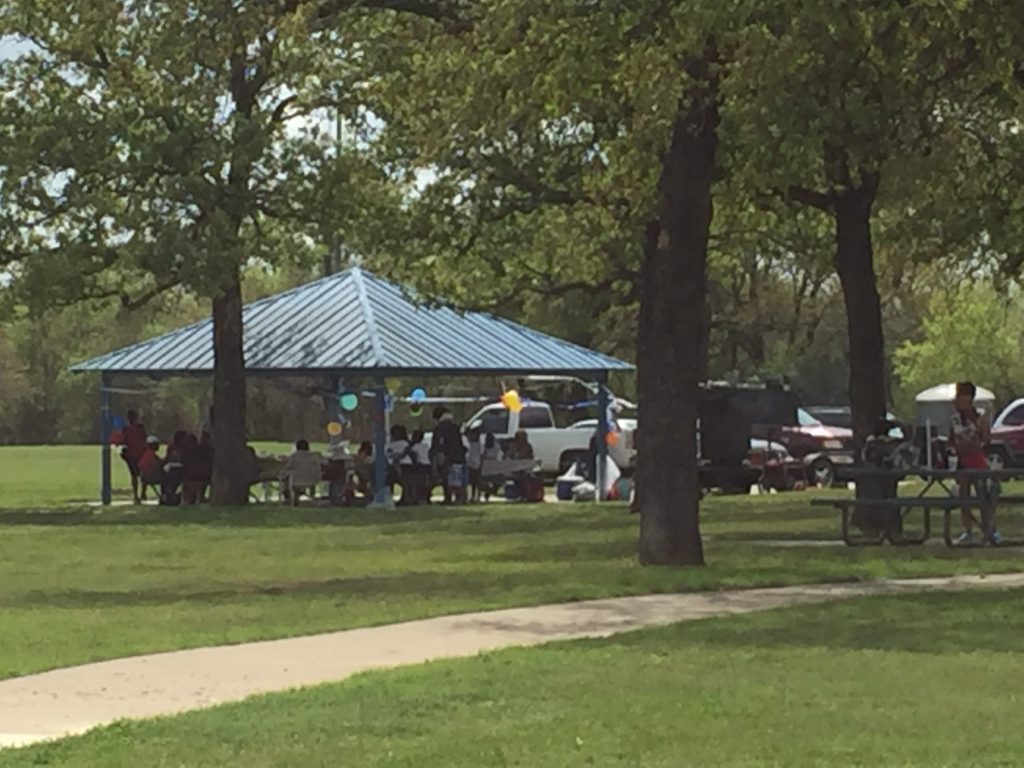 But something about this Stop Six neighborhood does make it a desirable target for a company like BlueStone: It’s predominantly minority and doesn’t have a lot of money to fight back.
But something about this Stop Six neighborhood does make it a desirable target for a company like BlueStone: It’s predominantly minority and doesn’t have a lot of money to fight back.
Does anyone who already has experience in these matters believe it was only coincidence that drove BlueStone to pick this Stop Six site, instead of say, somewhere on the tonier west side? That’s what makes this fight an environmental justice fight along with everything else.
BlueStone has said that its well will only be used for its “nearby” operations. But those operations only produce about half a million gallons of waste a day. Why do they need a permit that allows for disposing of three times that amount? It’s not unusual for a waste well to get a permit under the guise of exclusive use, only to amend the permit a short time later to allow all comers – and charge a nice profit. It also makes it a lot easier to flip in hard times. Unless there’s a deed restriction on this operation, this Lake Arlington site could end up the same way, and the industrial use will overwhelm everything else. The inner-city Black Eden will be gone.
When Downwinders’ staff visited this last weekend, not a lot of the park users were aware of what was taking place just on the other side of the tree line. Given the history and stature of the park – it’s named after a black former city council member and is due to headline new bike and hike trails along the Lake’s west shore – there’s potential for a lot of good organizing in Fort Worth’s black community, and Stop Six in particular, by well opponents. This is as blatant and combustible a combination of race and pollution as recent Barnett Shale Gas Wars have produced.
The area is represented by Fort Worth City Council Member Gyna Bivens, who’s already voted to fight the Bluestone permit, State Representative Nicole Collier, who voted against HB 40 in 2015, and State Senator Konni Burton, a Republican who voted for HB40 while praising Fort Worth’s gas ordinance as a model to be duplicated. That would be the same ordinance now under attack from Bluestone’s pursuit of the well site by Eugene McCray Park.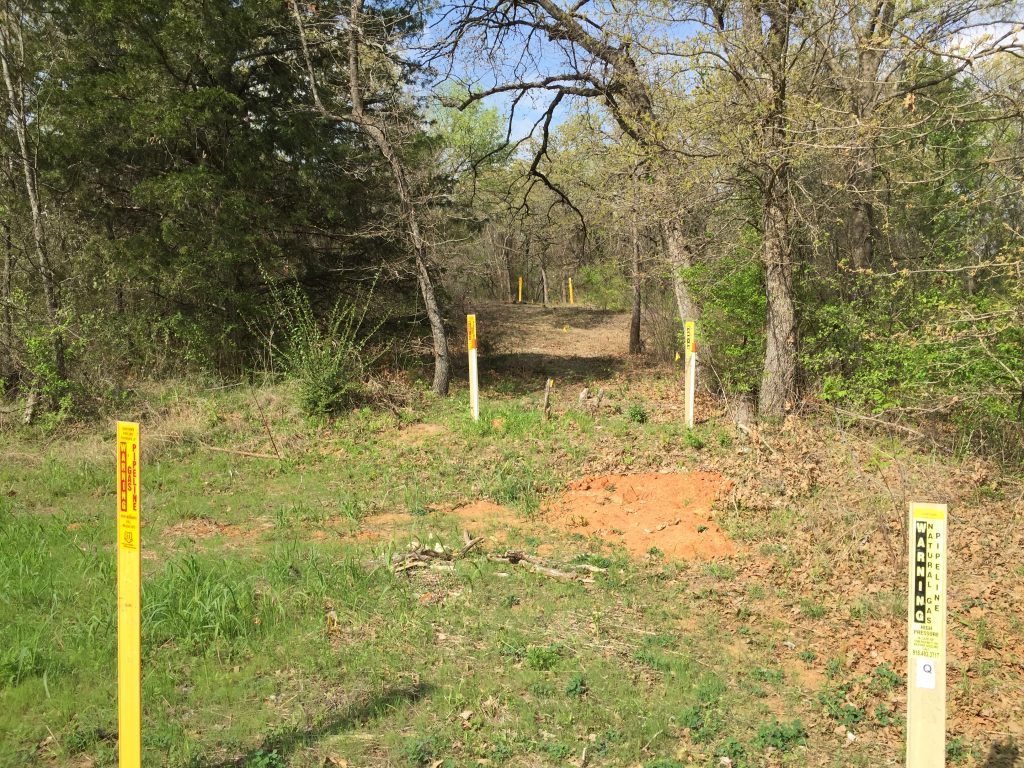
If you haven’t already, you can write in to officially register your opposition to BlueStone’s permit address via our Click N’Send feature. A hearing in Austin at the Railroad Commission offices has been set for May 25th and 26th…..
Raising the potential for earthquakes within distance of a large, important dam,
Potentially poisoning drinking water for a large chunk of the Metroplex,
Spills and accidents causing fish kills and other wildlife harms
Larger and larger emissions threatening breathers downwind,
Ignoring local ordinances and the rule of law,
There were already plenty of good reasons to oppose the BlueStone injection well. Now there’s another.
The First Step to Opposing a new Disposal Well on the Shores of Lake Arlington is Just a Click Away
Today, we officially announced our hiring of Anthony Gonzales as a second Downwinders staffer. One of the reasons we need additional personnel is to help fight off the kinds of new challenges that a Trump presidency will encourage. Exhibit A: The Bluestone Natural Resources Corporation permit to open a disposal well for their fracking wastes on the shores of Lake Arlington, the major source of drinking water for the city of approximately 350,000 people.
Since the passage of the notorious HB 40 in 2015 by the State legislature that substituted state control over local zoning in regulating oil and gas operations within city limits, no Texas municipality or gas industry operator has challenged the uneasy status quo that was in place when the law was signed…until now.
In 2012, after rounds of concern about earthquakes and industrial contamination Fort Worth banned the siting of disposal wells within their city limits – a bold move for a municipality that openly embraced the fracking boom.
But when HB40 was passed by the State Legislature in 2015, local regulations like Cowtown’s disposal well ban had to have been in place for five years to be commercially acceptable. Bluestone applied for its permit less than six months before that five year period was up.
Last year Bluestone bought out Quicksilver and all of its Barnett Shale wells. Instead of continuing to use existing wells outside the city limits, Bluestone wants the convenience of dumping in town. Its permit requests permission to inject up to 1,250,000 gallons of fracking waste PER DAY into the well. Here’s a Channel 11 report on the controversy.
Both the cities of Fort Worth and Arlington have filed formal protests to the permit request. We need EVERY local, state, and federal elected official representing the area to do the same.
Meanwhile, you can join the chorus of opponents by simply sending an email down to Austin.
Use our Featured Citizen Action Click N’ Send System to let Austin Know You Oppose This Permit
A simple letter like the one below is ready to go once your contact information is plugged in….All you have to do is click
….or send your own comments opposing the well
to the Texas Railroad Commission at this address:
Juanita.jimenez@rrc.state.tx.us
Here’s a sample letter.
Dear Ms. Jimenez,
I am writing to protest the permitting of Bluestone Natural Resources wastewater disposal well
with Tracking Number 46045 in Newark, East Field for Cravens Lease, Well Number1.
Your Full name
Your complete Address
______________________________________________________
Don’t Delay. Make Sure They Feel the Push Back in Austin.
To keep track of developments about this disposal well permit, please check out the FaceBook page of local environmental group Liveable Arlington.
Testify! Stop Getting Railroaded by the RRC
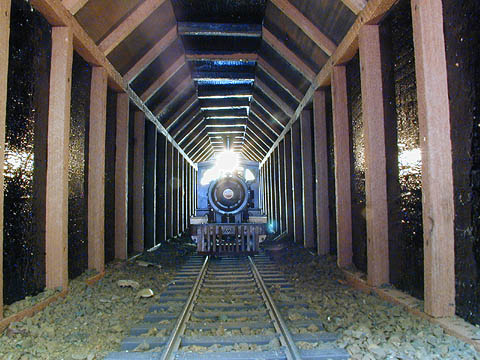 There's no better symbol of the anachronism that is Texas state government than the ineptly named Railroad Commission, or RRC. It has nothing to do with choo-choos, and everything to do with the State's oil and gas legacy.
There's no better symbol of the anachronism that is Texas state government than the ineptly named Railroad Commission, or RRC. It has nothing to do with choo-choos, and everything to do with the State's oil and gas legacy.
Or is it misnamed? Its innocuous title keeps it off a lot of citizens' radar screens while going about its business of shoving anyone or anything not in the oil and gas business around to make it more comfortable. Our drilling contaminating your water? You can to get the bottled stuff delivered. Our waste disposal causing earthquakes? You'll get used to it. Our air pollution causing your child's nosebleed? What's a couple of ER visits compared to our nation's energy security? Railroad? Yes – it's right there in our name.
Instead of being appointed by the Governor, the three RRC commissioners are elected statewide…with the help of contributions from the oil and gas industry. This isn't the fox guarding the hen house. There are no hens left.
This is why any review of the Commission, even one by the equally inept State Legislature, is a chance to get the word out about how god-awful the RRC is and what needs to be done to overhaul it. Beginning this month, that's what's happening, because 2017 is the year the Railroad Commission is getting "sunsetted" by the state.
Sunset laws demand that every state agency must come before the legislature and justify itself anew about every 12 years. Usually pro forma exercises, occasionally a terrible agency is allowed to die. Most have their missions amended or rules tweaked, or their names changed. this is how the "Texas Natural Resources Conservation Commission," or, "TNRCC/"TRAINWRECK," became the "Texas Commission on Environmental Quality/"TCEK." After being postponed last session, it's the Railroad Commission's turn now.
Tomorrow night's faux-official Town Hall meeting on the Railroad Commission being sponsored by Earthworks, Public Citizen and the Sierra Club is a kind of milk run for the more important job of testifying in front of state legislators in Austin later in the month, on the 22nd. Attend to find out how you can use this process to gain more publicity for its terrible record, and perhaps be able to actaully tweak the system to be more citizen-friendly.
Texas Railroad Commission Town Hall
Tuesday, August 2
Grapevine Convention Center
1209 Main St.
(located off 114 and Main St. exit)
Registration: 6:30 pm
Program: 7:00 pm
Texas Railroad Commission Public Testimony at the Capitol
Monday, August 22
For more information on the whole process, talk to Rita Beving with Public Citizen and the Sierra Club, 214.557.2271
Why a small variance could mean a big increase in DFW smog
Thousands of gas wells, pipelines, storage tanks, compressors, and other pieces of infrastructure in oil and gas patches, which individually don't emit the huge volumes of air pollution coming from a single cement kiln or a coal plant can, when combined, easily total tonnage larger than both.
And that's what has happened in DFW over the last decade. As the Barnett Shale boom crept further into the region's "non-attainment" area" for smog, all the air pollution from all those thousands of individual sources begin adding up and having an impact on air quality.
While other large sources were actually decreasing their pollution, the oil and gas sector was going the opposite direction. It ballooned. To the point where it's now the fourth largest category of air pollution in that "non-attainment area." The three sources that outrank it? 1. All vehicles on the road. 2. All vehicles off-the-road, and, 3."area sources" a catch-all term including everything from backyard BBQs to small paint shops, and probably some oil and gas sources itself. Oil and Gas air pollution is, by volume, now the largest source of industrial air pollution in the North Texas area, exceeding the Midlothian cement kilns, local power plants (now all gas-fired), and large manufacturing plants like the GM truck and SUV factory in Arlington. Only the East Texas coal plants emit more and their 90-100 miles outside the nonattainment boundary (another problem that needs fixing).
At the same time oil and gas air pollution rose from Barnett Shale development, DFW smog levels, which had been declining, began to plateau. For a decade now the annual smog average has hovered on either side of 85 parts per billion (ppb) – the obsolete 1997 standard that we were supposed to reach in the early Oughts. We were at 86 ppb of smog in 2008 and we're now at 83 ppb.
Look at the chart below, generated by the North Texas Council of Governments. In 2007 DFW had 45 "exceedence days". In 2015, DFW had 44 "exceedence days." There's a very good case to be made that oil and gas air pollution has prevented DFW from making the kind of air quality progress it might have otherwise made without that burden.
For the last five years, the State of Texas has been on a mission to deny any link at all between the oil and gas industry in the Barnett Shale and DFW smog. It's gone out of its way to hide the real volumes of pollution emitted by these sources, as well as avoiding or downplaying the significance to regional air quality of decreases in that pollution. That's not hyperbole, it's the record.
In looking ahead with its proposed DFW air plan now in the pipeline, the State has predicted that a drop in the number of new wells in the Shale will equal a drop in the amount of air pollution coming from O&G sources. Sounds logical doesn't it? Yet the industry's own text books say that it ain't necessarily so.
A drop in new wells is the tip of the O&G iceberg in DFW. Just because there were no new wells drilled last month doesn't mean there's no new pollution being released this month. Some 20,000 wells, almost 1000 large compressors, untold thousands of smaller compressors, millions of gallons of storage capacity, miles of pipelines – these all continue to operate and emit huge amounts of air pollution 24/7.
And when production-per-well drops, and the densest parts of the patch begin to play out, as is occurring now in the Barnett, investors don't usually go with the flow. They want to increase the flow. And so they install more "lift compressors" to squeeze every last molecule of gas they can out of a well. These compressors, powered by gas or diesel, increase air pollution. Not by a lot by themselves, but when you start putting them together, by the thousands, then yeah, they have an impact. And so, even when O&G production is declining, you can have increases in O&G air pollution.
Downwinders at Risk and the Sierra Club made this argument in our comments about the state's plan, providing sources from industry to show exactly how this has taken place plenty of times before. We told Austin it was underestimating the impact of O&G air pollution – again. The State dismissed our concerns and said no problem.
Which brings us to Mansfield in Tarrant County, scene of the last pre-HB40 gas ordinance fight in the state.
Last week, there was a small headline in the Fort Worth Star-Telegram a lot of people probably ignored. It concerned a routine variance to zoning code being requested by (notorious) gas well operator EagleRidge. At issue was whether the company could keep using gas powered lift compressors instead of electric-powered ones as the city's year-old ordinance required. EagleRidge made an argument in favor of the variance which sounded very familiar to some of us….
EagleRidge first noticed a dramatic decline in natural gas production at 15 of its wells last year, as it went from 8 million to 2.5 million cubic feet of natural gas per day. Low natural gas prices, trading about $2.10 per British thermal unit Monday, could make the wells economically unfeasible, according to Mark Grawe, executive vice president of EagleRidge.
That prompted EagleRidge to try a new strategy, using small gas lift compressors that increase production on the wells. Last year, Mansfield granted a six-month variance to allow the compressors on a trial basis.
Grawe said the compressors have already improved production on three of the wells, but addition tests are needed on EagleRidge’s other wells.
Eagle Ridge got its variance. And besides the three lift compressors it's operating on the site now, at least two to three more or expected, and all of those might one day be replaced by two giant-sized compressors. And, Eagle Ridge told the council, it's experience in Mansfield will be repeated at "hundreds of wells in Southeast Tarrant County" that have also seen declining production.
Eagle Ridge's ratio was approximately one lift compressor for every two wells. There are 15 wells as part of this one variance, "hundreds" in SE. Tarrant County waiting their turn, and 20,000 more throughout the part of the Barnett Shale in the DFW non-attainment area for smog. That's thousands and thousands more lift compressors emitting lots more air pollution even as Barnett Shale production is declining – and most will be located in cities or counties where there's not even a requirement for electric power to get a variance from. In other words, this is exactly the scenario Downwinders and the Sierra Club warned about in their comments, but which the state dismissed.
That's in addtion to the thousands of lift compressors already located in DFW, the exact number and location of which are unknown to EPA and Texas because they don't require indivdual permits. Austin "estimates" the total amount by using, you guessed it, production numbers. Here'a map from the Texas Commission on Environmental Quality guestimating where all those existing lift compressors are now:
If you think there might be a correlation between O&G pollution and stagnating DFW smog levels, what's the answer? It's pretty straight-forward. Stricter emission standards for all equipment, leak detection, electrification of large and small compressors. These are all things the industry is either doing in fits and starts in North Texas and elsewhere, or being required by the new EPA methane rules, but they're not being applied across the board in the Barnett Shale, or they don't apply to existing facilities, or both.
Who's going to make that happen? Local governments were doing some of it – up until the passage of HB40. For example, Dallas, Mansfield, and other cities required electric-powered compressors and state-of-the-art leak detection. But that's off the table, as is any action from Austin. That leaves the EPA as the one regulatory entity that could, if it wanted, impose uniform emission standards on all O&G facilities in the 10-county non-attainment area, including Denton, Johnson, Parker, Tarrant, and Wise counties. It could do so as part of it's own anti-smog plan for the region.
But before it can start writing its own plan, the EPA must first reject the state's. And for it to do that we must give the EPA the political support it needs to stand up to the backlash from Austin you know will come. Thus the need for resolutions from DFW cities and counties asking the EPA to reject the State plan. Thus the need to show-up this coming Monday morning at City Hall and support an effort by Dallas City Councilwoman Sandy Greyson to have the City of Dallas join Dallas County in calling for EPA intervention in DFW air quality: 9am Room 6ES, Quality of Life Committee.
Don't let the Mansfield variance become the regional template.
Monthly TEDX Teleconference Tutorial on the Hazards of Fracking
 Founded by the late great Theo Colburn, who along with her co-authors of "Our Stolen Future" way back in 1996 just about invented the field of "endocrine-disrupting chemicals," the Endocrine Disruption Exchange (TEDX) is holding a monthly teleconference series begining in April focusing on chemicals associated with fracking.
Founded by the late great Theo Colburn, who along with her co-authors of "Our Stolen Future" way back in 1996 just about invented the field of "endocrine-disrupting chemicals," the Endocrine Disruption Exchange (TEDX) is holding a monthly teleconference series begining in April focusing on chemicals associated with fracking.
First up on Thursday, April 7th at 1 pm is Dr. Chris Kassotis, who's been looking at the connection between fracking chemicals and surface and ground water contamination near fracking sites. According to the TEDX release, Kassotis will speak about…
"…his recently published research demonstrating increased endocrine disrupting activity in surface and ground water near fracking wastewater spill sites, as well as nuclear receptor antagonism for 23 commonly used fracking chemicals. His studies have shown prenatal exposure to a mixture of those chemicals at likely environmentally relevant concentrations resulted in adverse health effects in both male and female C57 mice, including decreased sperm counts, modulated hormone levels, increased body weights, and more. Dr. Kassotis will also discuss his recent work showing increased receptor antagonism downstream from a wastewater injection disposal site.
Dr. Kassotis is a Postdoctoral Research Associate in the Nicholas School of the Environment at Duke University. He completed his PhD at the University of Missouri working with Susan Nagel to assess unconventional oil and gas operations as a novel source of endocrine disrupting chemicals in water, and the potential for adverse human and animal health outcomes from exposure.
This April get together is one of three briefings being given from now until June. According to a preview of the next two calls:
Thursday May 5, 2016, 1:00 pm Central – Dr. Shaina Stacy will discuss "Perinatal outcomes and unconventional natural gas development in Southwest Pennsylvania"
Thursday June 2, 2016, 1:00 pm Central – Dr. Nicole Deziel will discuss "A systematic evaluation of chemicals in hydraulic-fracturing fluids and wastewater for reproductive and developmental toxicity"
You have to go online and register as a participant if you want to listen in or ask quesitons via a live chat line.
How to Outflank HB40 in the Barnett Shale
 Last week, the EPA made an important admission.
Last week, the EPA made an important admission.
"Methane emissions from the oil and gas industry are significantly higher than previous official estimates, according to draft revisions of the U.S. greenhouse gas emissions inventory released Monday by the Environmental Protection Agency. At 9.3 million metric tons, revised estimates of 2013 emissions are 27% percent higher than the previous tally. Over a 20-year timeframe, those emissions have the same climate impact as over 200 coal-fired power plants."
This most recent analysis jives with other studies like the one from UTA/EDF that found Barnett Shale facilities leaking up to 50% more methane than previously estimated. In reaction to the information, EPA Chief Administrator Gina McCarthy was quoted as saying "we need to do more" to cut methane pollution.
In its last year in office the Obama administration is finally grasping that natural gas isn't the climate change wunderkind its promoters claimed and last week's announcement is the tacit admission they need to do more to crack down on oil and gas.
What has that got to do with DFW in 2016?
By Spring, the Regional office of the EPA is expected to announce that it has rejected the State's clean air plan for DFW in regard to its application of "Reasonably Available Control Technology." That means the state hasn't required the application of readily-available air pollution controls for major sources the way the Clean Air Act demands. Specifically, EPA staff have cited the failure of the state to lower the emission standards for the Midlothian cement kilns to reflect more modern technology. But it's not the only area where Texas fell short. There are no new pollution requirements for any oil and gas facilities in the state's plan either.
EPA rejection of the Technology section of the state's DFW air plan would mean the EPA would begin to draft its own clean air plan for the region. An EPA-drafted plan gives local citizens concerned about the health impacts of fracking an opportunity to persuade the Agency to use the plan to crack down on smog-forming Nitrogen Oxide (NOx) and Volatile Organic Compounds (VOCs) pollution in the Barnett Shale by requiring lower emission standards on all aspects of drilling and production.
While methane isn't considered a smog pollutant, it doesn't get emitted by itself. It comes out of a stack or valve, or leaks from a pipeline combined with smog-forming VOCs. So the more you control VOC pollution, the more you control methane pollution.
In light of last week's announcement, this gives EPA an extra incentive to go after VOC emissions in DFW even though the conventional wisdom is that it's combustion-generated Nitrogen Oxide pollution that really makes DFW smog so bad.
BTW, that conventional wisdom is under attack because the worst-performing air monitoring sites in North Texas are all in the Barnett Shale and heavily influenced by pollution from oil and gas facilities – both NOX and VOCs. It's possible to imagine a strategy to get smog numbers down in DFW solely by application of oil and gas emission regulations that can impact these important monitors – which drive the entire region's fate – even if the new regs have minimal impact on monitors elsewhere.
What kind of new regulations are we talking about?
* Start with the electrification of all 650 large natural gas compressors in the 10-county area.
* Do the same thing for all drilling rigs in the same 10-county area – nothing but electric.
* Emission standards for tanks and pipelines that reflect the latest leak-detection technology.
Inclusion of new EPA “Control Technique Guidelines" which are part of Agency's new methane rules. According to the Agency's release on the the new rules, “…reduction of VOC emissions will be very beneficial in areas where ozone levels approach or exceed the National Ambient Air Quality Standards for ozone."
Under the new rules, areas like DFW that host large concentrations of gas pollution sources and are officially categorized as “non-attainment” for smog receive "an analysis of the available, cost-effective technologies for controlling VOC emissions from covered oil and gas sources."
There's one more reason EPA has an incentive to go looking for all the cuts in oil and gas pollution it can find in the 10-county DFW non-attainment area: after the cement kilns, there's no other major sources the Agency can target locally.
Because while it has the authority in a federal clean air plan to regulate all pollution sources in that 10-county DFW non-Attainment area, the EPA can't write new emission standards for the East Texas coal plants located 100 miles outside of that 10-county area – even though those coal plants have more of an impact on North Texas smog than any other source of pollution. EPA (and us) can put pressure on the state to address these dinosaurs, but it can't touch them through a DFW air plan.
EPA staff has estimated it will take a cut of 100-200 TONS PER DAY in local smog-forming Nitrogen Oxide pollution for DFW reach the current 75 parts per billion smog standard. The State's "plan" – i.e. the federal gasoline fuel changes it relies on – only represents a 20-40 tons per day cut.
Where do the other 60 -160 tons a day in cuts come from?
To give you some idea of the size of that gap, the state estimates that all on and off road vehicles in the 10-county area will emit 161 tons per day of NOx in 2018.
State-of-the-art controls on all the cement plants might give you up to 15 tons a day. Electrification of the large compressors, another 15-16 tons per day eventually. After that it gets hard to find large volumes of cuts without the coal plants. And this is why the EPA should give cuts in VOC/methane a longer look than they have before – they're concentrated in the same areas where the region's worst-performing monitors are and they represent a huge source of climate change pollution that could also be another skin on the wall in addition to lowering smog levels.
There's no question the passage of HB40 has stymied grassroots progress toward more protective regulation of fracking by municipal governments in the Barnett Shale. It's thrown what was a fairly successful local movement into disarray. To date, there doesn't appear to be any consensus about strategies to combat the effects of the legislation.
But a way to outflank some of the impacts of HB 40 coming is coming down the pike, and it offers local fracktivists an opportunity to rally round a common, achievable goal – lowering emission levels across the board in the Barnett Shale. We can overlay a larger, stricter regional template for oil and gas regulation in place of 100 separate municipal ones.
What better way to nullify the efforts of the nullifiers in Austin?

